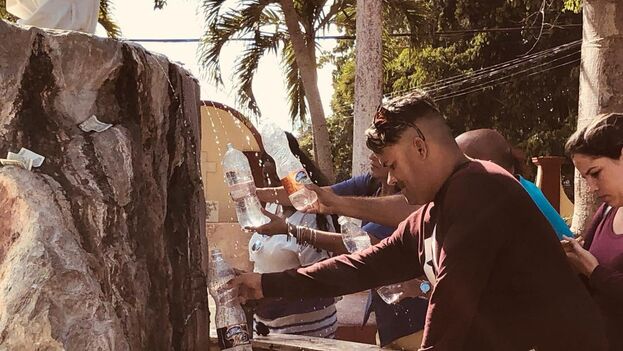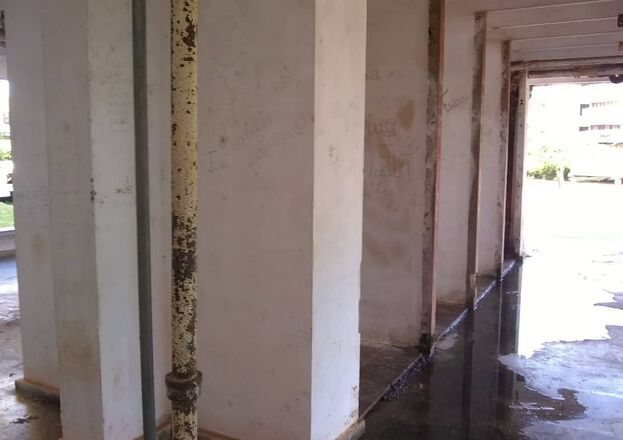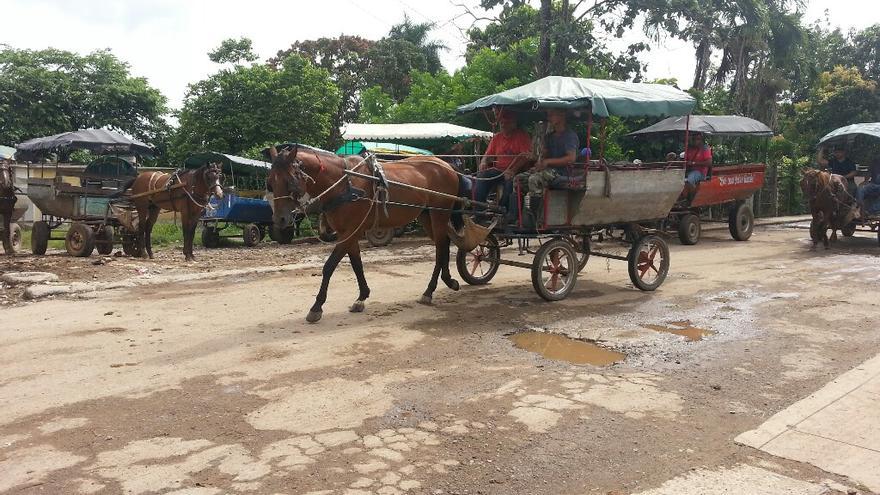![]() 14ymedio, Bertha Karolina Guillén, Candelaria, December 28, 2020 — Jorge misses the days when he could meet his customers, shake their hands, share a coffee and venture off to explore Havana. Before the pandemic took his job as a private tour guide, this entrepreneur was part of a private network that is now trying to survive through creativity and technology.
14ymedio, Bertha Karolina Guillén, Candelaria, December 28, 2020 — Jorge misses the days when he could meet his customers, shake their hands, share a coffee and venture off to explore Havana. Before the pandemic took his job as a private tour guide, this entrepreneur was part of a private network that is now trying to survive through creativity and technology.
The outlook is bleak. 250,000 private sector workers, most of them in tourism, lost part of their income during the month of March. The pandemic has negatively impacted some 26,000 property owners and 52,000 taxi drivers according to a report published by the business consultancy firm AUGE.
“There was no other option. We either adapted to the changes and restrictions the pandemic demanded or we lost everything. The Airbnb platform made it possible of create an online presence through the Zoom app, so access to the internet was essential,” explains Jorge, a property owner who leases to tourists. continue reading
However, the service is not yet licensed in Cuba due to the unreliability of internet service on the island and the U.S.embargo. However, some hosts have managed to overcome this by using a VPN (Virtual Private Network), which directs them to an IP address in another country, a fairly common practice used to get around censorship.
“I was able to do some. After being used to close and direct contact with clients, it was a new and challenging experience. You have to be able communicate effectively so that the other person feels like a participant in the video call,” says Jorge, who had to very quickly learn the art of talking about Cuba through videoconferences and contacting potential clients when the borders reopen.
Puppy has a tiny beauty salon on Havana’s San Miguel Street. “We were just about to open when the pandemic hit. We thought we would lose our entire investment,” he explains. “After months of not earning a cent, it occurred to me to advertise myself as an at-home hairdresser and barber. I never imagined it would so successful.”
Puppy and his sister make a very attractive pair.”We do haircuts and massages. We focus on people who want to look good but also on people who are bed-ridden, people who cannot leave their homes because of the pandemic,” he says. “In the end, we have found a broader and more loyal niche than the one we had before.”

“When we were working out of a salon, some of our income went to maintenance, to cleaning supplies, even to buying toilet paper when it ran out. Now we go to other locations and, in those conditions, the homeowners provide those things, though we still bring along our own products,” he adds.
He does admit, however, that working in people’s homes has its challenges. “When you go to a place you haven’t been before, you don’t know if you’ll find a legitimate customer or someone who is up to no good. But so far most of our experiences have been positive. You won’t see me paying to have my own place anymore. I am a hairdresser who is a la carte and a la casa.”
Yohana and Mirna are the names behind the brand Detalles Y&M, a a craft store that sells items made from recycled products. The two friends had been wanting to “do something together” for a long time but it wasn’t until a few months ago that they came up with the idea. “We quit our jobs as a hotel receptionist and tour guide to focus exclusively on our store,” explains Yohana.
They first went public with their idea during the quarantine at a workshop organized by the Antonio Núñez Jiménez Foundation with the Embajada Rebirth /Tercer Paraíso. More than fifty businesses created mostly since the start of the pandemic made presentations at the event in Havana, which took place in early November.
Renting space for a commercial retail business can cost between 10 and 35 CUC** per day depending on size or location, so online stores can be a profitable alternative. Small companies such as Bamboleo, Dehydratados Habana, Subtlety and Detalles Y&M operate mainly through social media and classified ad sites.
“We have to constantly reinvent our business, aiming our products at an ever more demanding public, using recycled components we can easily acquire instead of imports and staying ahead of the competition,” Mirna points out.
Their social media pages display a wide variety of products made from glass jars adorned with jute fabrics, lace and ribbons that can be used to store spices in the kitchen or in the bathroom but which could also serve as vases. Most of their distribution is carried out by couriers with electric scooters.
“Despite the growth of similar businesses, we have a seal that differentiates us. Although we use the same products, we always add our own touch. Learning to use social networks and managing online retail has been crucial to marketing our products,” Mirna points out.
“It’s worth the effort as long as you have the desire, no matter how difficult the conditions may be,” says Yohana, who relies on a budding network of couriers that crisscross the city on the backs of privately owned electric motorcycles.
By the end of 2019 there were already 200,000 of these motorinas in Cuba, a boom that was the result of several factors: an inadequate public transport system, a gasoline shortage, the vehicles’ ease of operation and the opportunities they provided for employment in midst of a pandemic.
Electric scooters can be purchased through the island’s state-owned chain stores but individuals can also import them directly from Panama’s Colon Free Trade Zone. Cuban customs will allow a vehicle into the country provided the buyer can pay a tariff of 200 pesos, the scooter does not exceed 1,000 watts of power and it cannot go faster than fifty kilometers per hour.
“I make deliveries for two private restaurants, a business that provides the paquete* on a daily basis and another that sells hearing aids and other devices,” says José Alberto, a 23-year-old who was unemployed at the start of the pandemic when he lost his job parking cars at a bed-and-breakfast in Old Havana.
“Everything fell apart because I was no longer earning an income to support my family. But then my brother I bought an electric motorcycle, repaired it and put it to work. Today those two wheels are what puts food on the table at my house,” he explains.
“It’s hard. I’m on the street all day, going from one place to another, but I’m not complaining. Either I do this or sell everything and move with my family to Panama or Nicaragua. At least I know how to do this and things can’t get any worse than they’ve been,” he says. A helmet, a reliable rechargeable battery that can be connected to an electrical outlet and a mobile phone to take orders. These are the work tools in this time of pandemic, with the nation’s economy in intensive care.
This article was made possible through collaboration with the International Center for Journalists (ICFJ).
Translator’s notes:
*El paquete (The Packet) is a digital compendium of pirated entertainment programming, largely from overseas, with a very large underground circulation throughout Cuba.
** CUC (Cuban convertible pesos) was one of Cuba’s two currencies — the other being the Cuban peso (CUP), but it was taken out of circulation as of 1 January 2021.
____________
COLLABORATE WITH OUR WORK: The 14ymedio team is committed to practicing serious journalism that reflects Cuba’s reality in all its depth. Thank you for joining us on this long journey. We invite you to continue supporting us by becoming a member of 14ymedio now. Together we can continue transforming journalism in Cuba.































